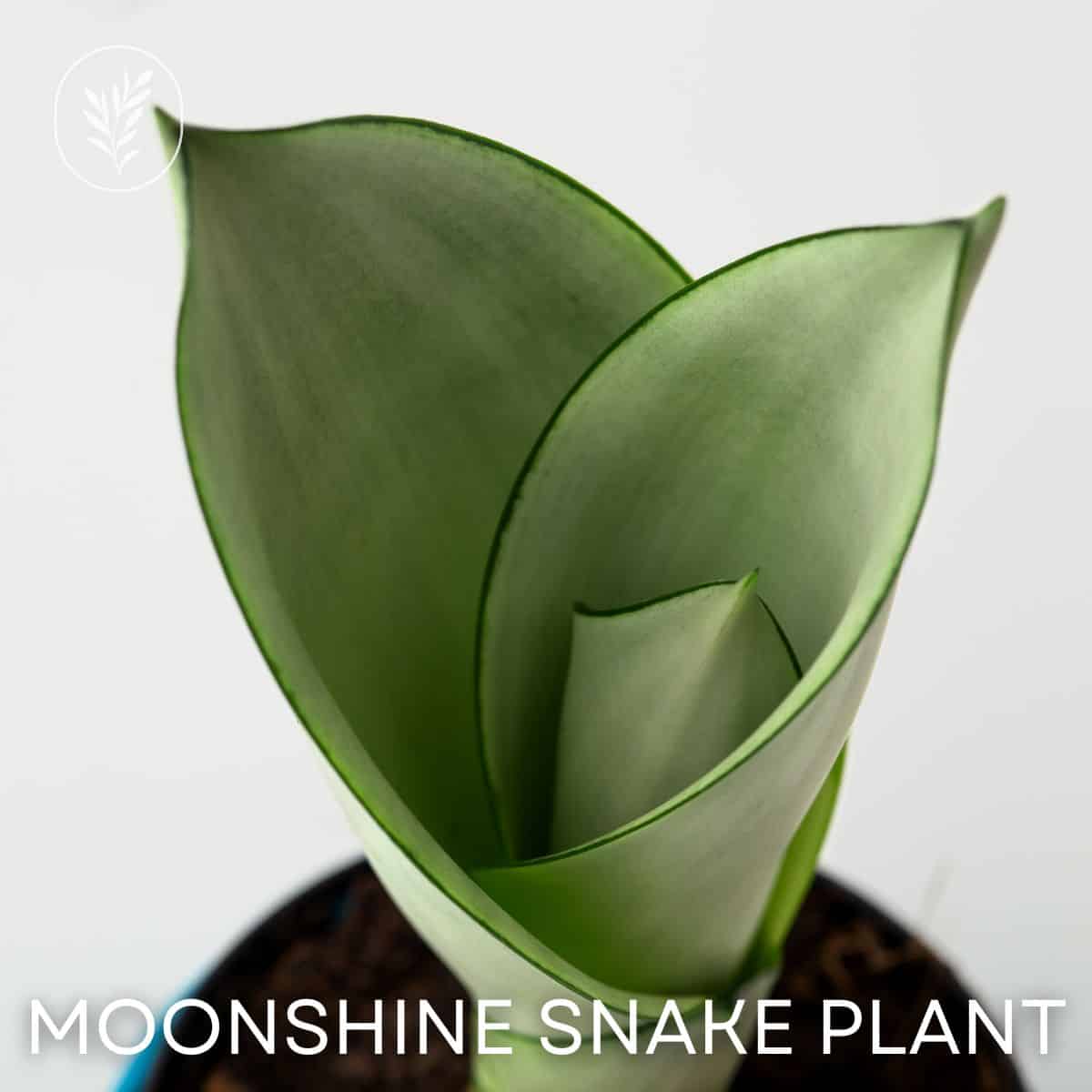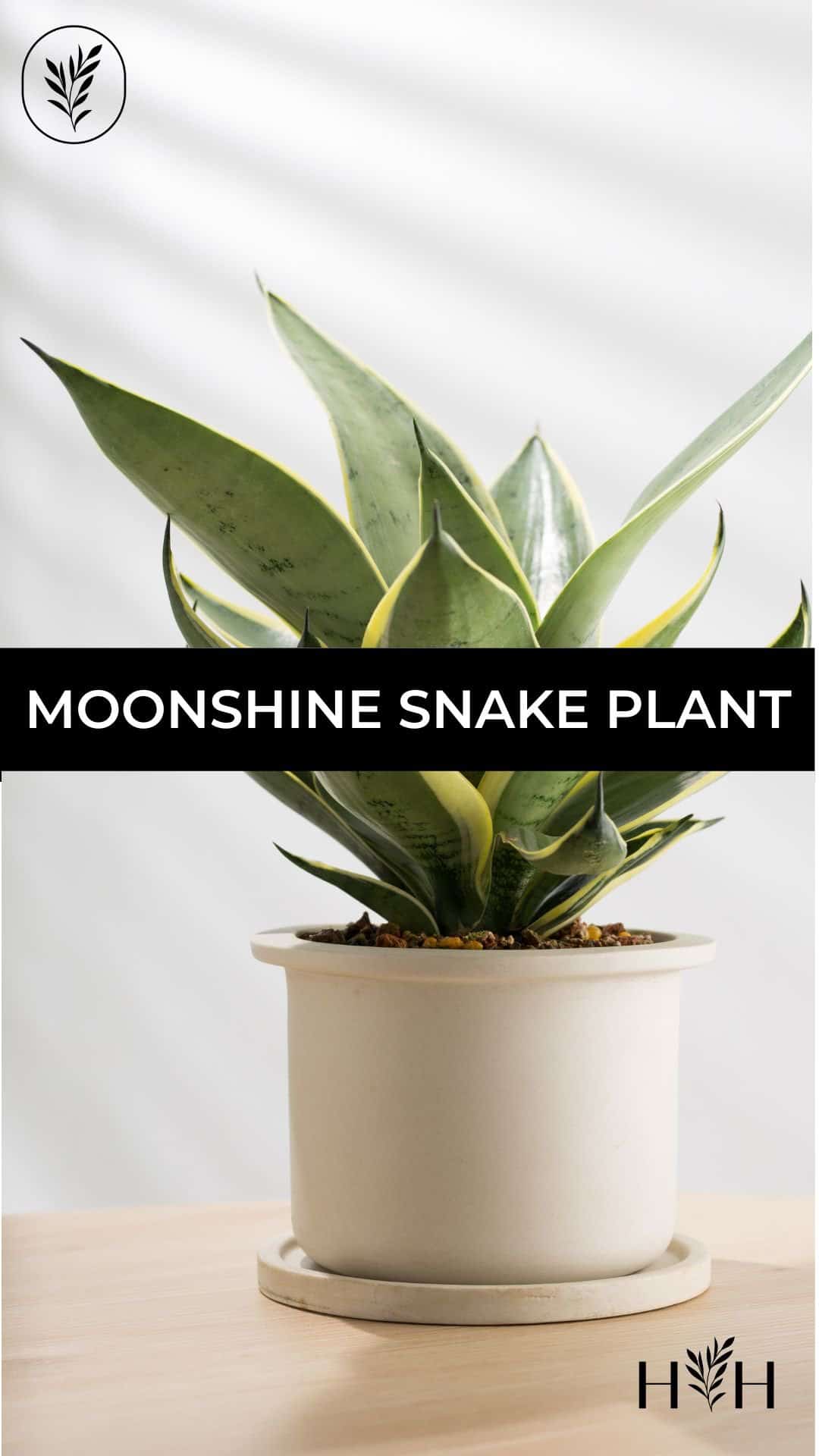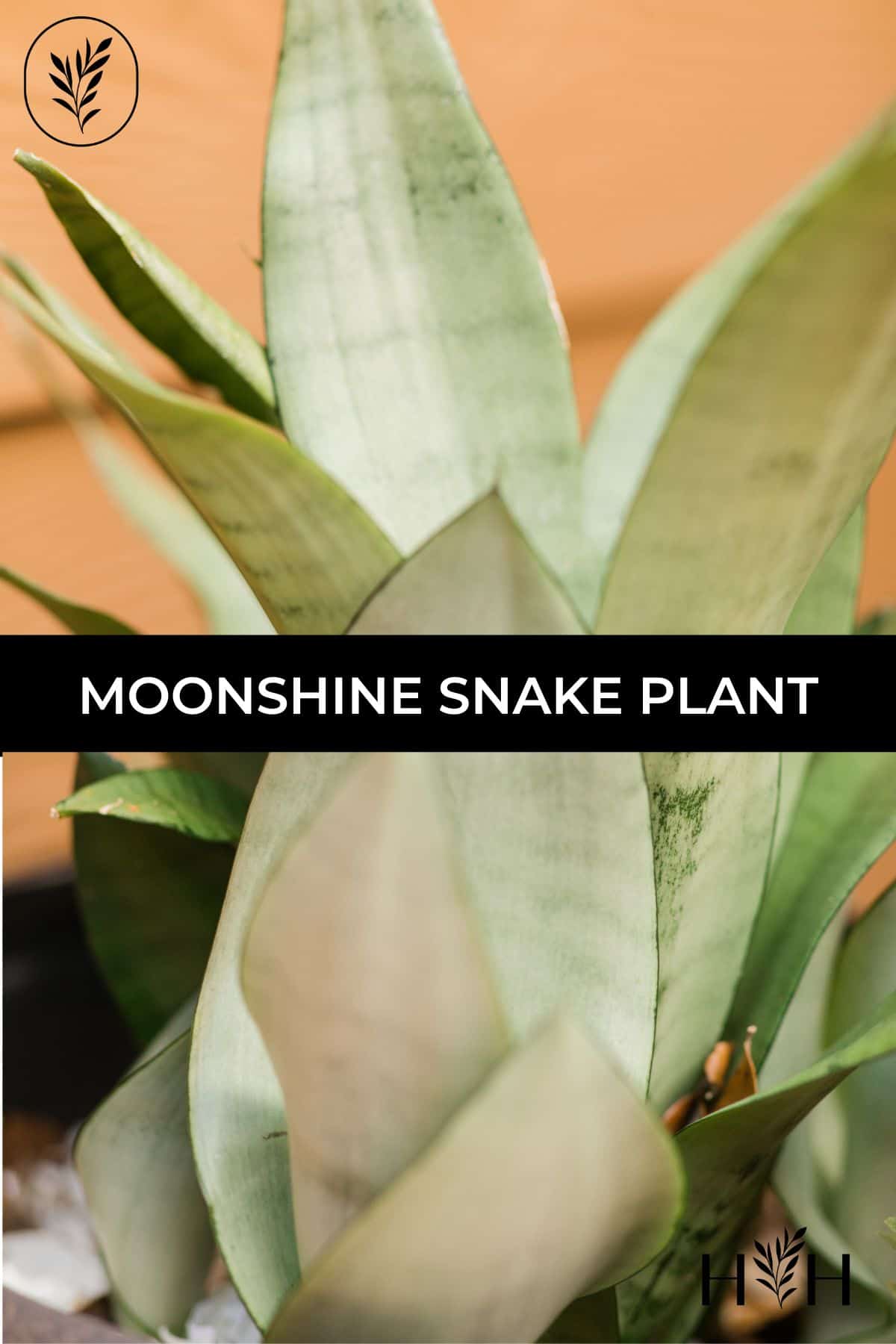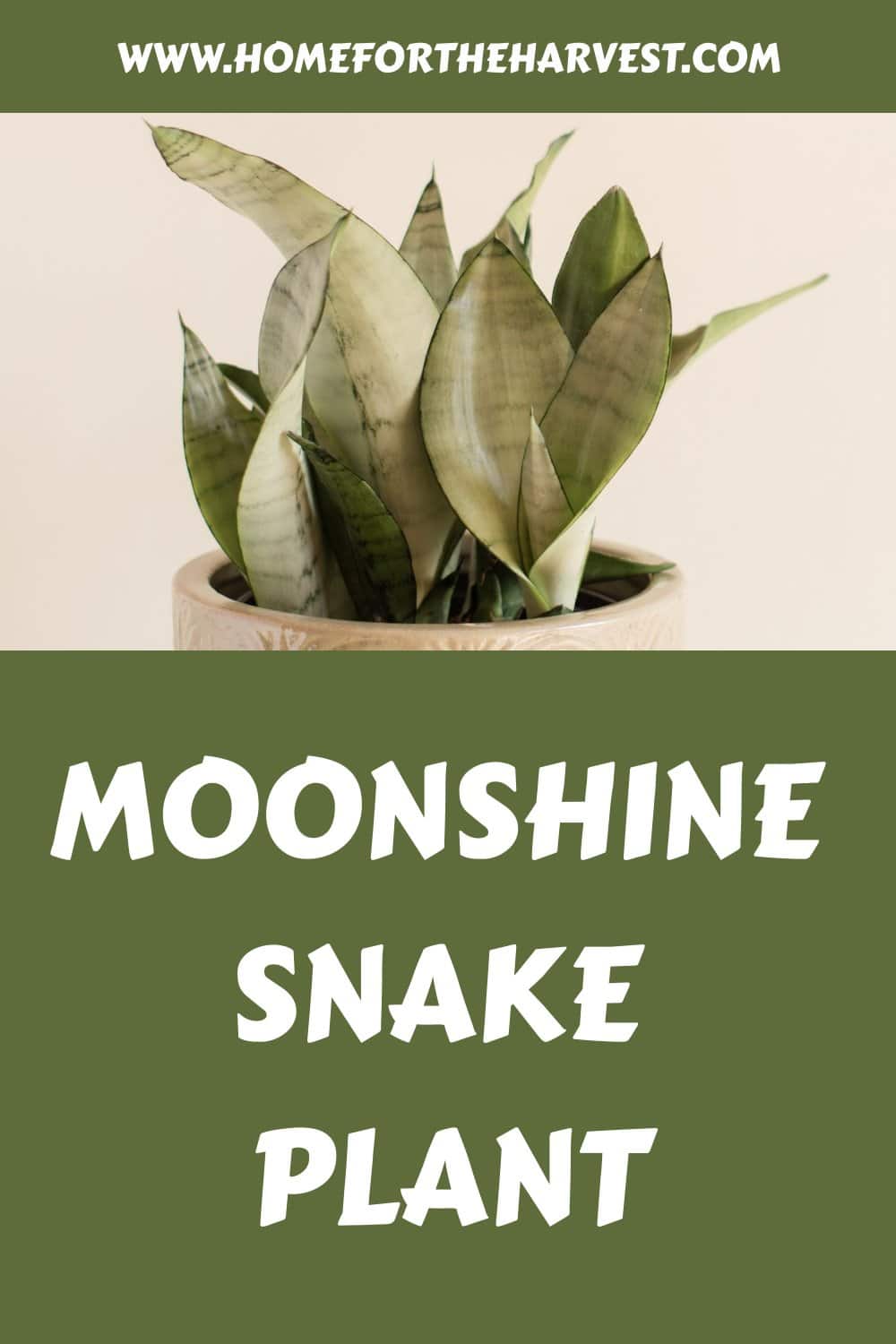Need an elegant yet easy houseplant? Moonshine snake plant is a must-have
Moonshine snake plant is a specialty variety with broad silvery-grey leaves. This tasteful cultivar also has very thin dark green margins along the edges of the leaves. Like other snake plants, ‘Moonshine’ is very low-maintenance, thriving with indirect light, free-draining succulent soil, and infrequent watering. Mature plants are usually about 18″ tall when grown as houseplants in containers.
Read on to learn all about the moonshine snake plant.
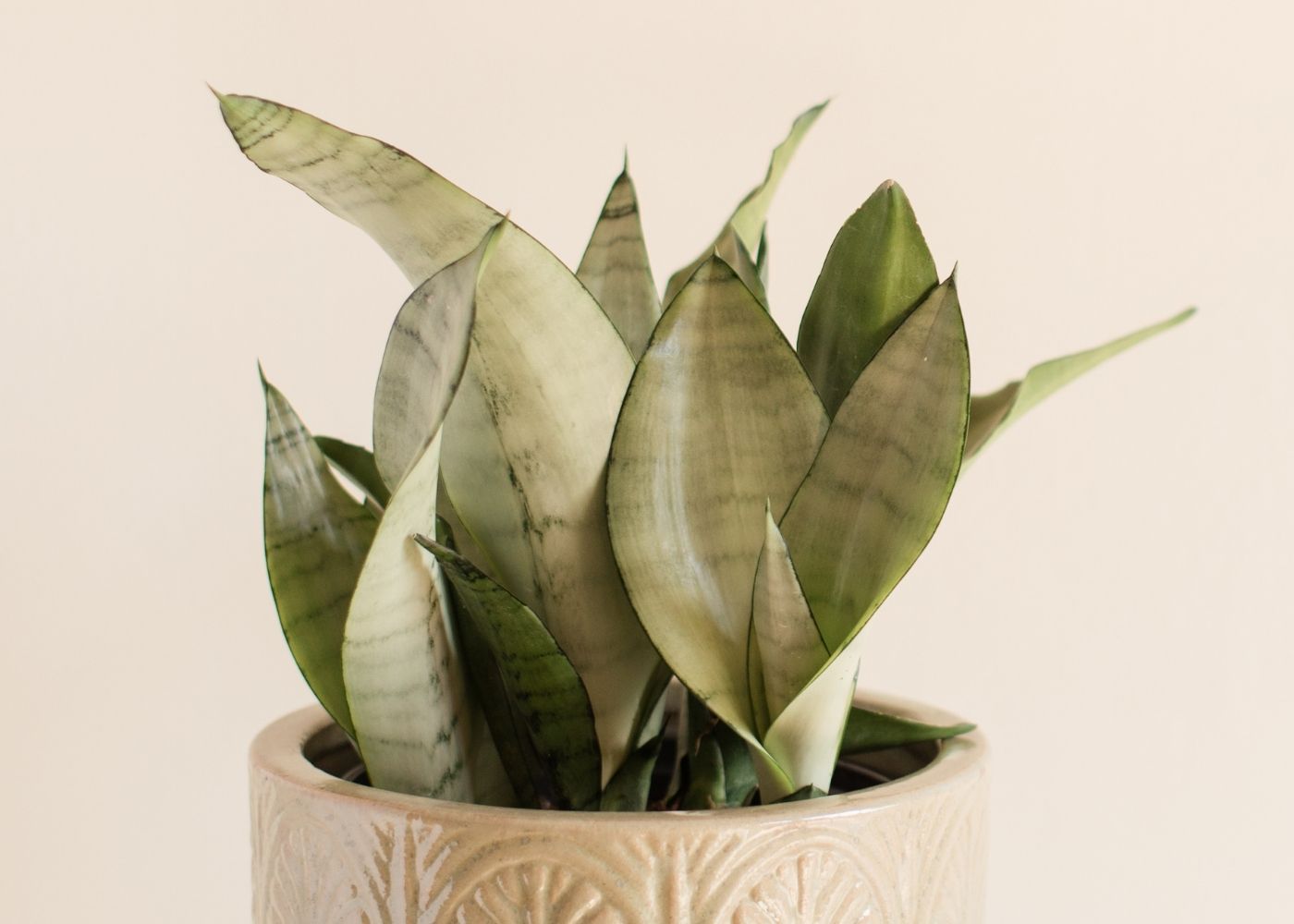
Introduction to the moonshine snake plant
Moonshine snake plant (Dracaena trifasciata ‘Moonshine’, synonym Sansevieria trifasciata ‘Moonshine’) is a unique cultivar with broad silvery-grey foliage. This attractive cultivar also has thin dark green edges on each leaf.
‘Moonshine’ is one of the most popular snake plant varieties for houseplant lovers to grow. It’s well-suited to growing indoors in a container as a houseplant.
Like all snake plants, this plant is toxic to people and pets.
Where to buy moonshine snake plants
You can buy moonshine snake plants online or at your local nursery. Be sure to look for a reputable seller to ensure you get a healthy plant. Avoid plants that have visible bugs, yellowed or shrivelled leaves, or other obvious defects.
How to care for moonshine snake plants
Moonshine snake plant is a low-maintenance, elegant houseplant that thrives with indirect light and infrequent watering.
Keep your plant in a pot with well-draining succulent soil, and water it only when the top 2-3 inches of soil are dry. This is a plant that likes its soil dry! It also likes warm weather, so try not to let the plant experience air temperatures below 50°F (10°C).
Lastly, try not to damage the tips of the leaves, as tip damage can stunt the growth of that particular leaf. You can help the plant maximize photosynthesis potential by gently wiping dust off the leaves now and then or running water down them while watering the plant.
Light requirements of moonshine snake plant
Like other snake plants, this variety grows best with bright indirect light but is tolerant of low-light indoor areas. Well-established mature snake plants can flower indoors (albeit rarely) with adequate bright indirect light.
If your plant is getting too much light, you’ll notice the leaves start to turn pale yellow. Direct sunlight (especially a sudden move to a sunny spot) causes the leaves to fade and even burn.
Water requirements of moonshine snake plant
During the growing season (spring and summer), water your moonshine snake plant whenever the top 2 inches of soil are dry. In the winter, allow the soil to dry out completely between waterings.
Snake plants keep water in their thick leaves, allowing them to grow even when the soil becomes totally dry between waterings. The soil may become desiccated and crusty if it dries out too frequently (or completely on a regular basis). Before watering, pierce or chop the earth with a chopstick or BBQ skewer to manually aerate the soil so it can absorb water more easily.
Underwatering (which is less common than overwatering) might cause wrinkly leaves. Give the plant a thorough soaking, then drain the water away and observe it for a few days to see if the wrinkles go away. Before allowing the soil to dry out to an inch or two between watering, give it another watering.
Fertilizing moonshine snake plant
Fertilize your moonshine snake plant every two to four weeks during the growing season (spring and summer), using a half-strength houseplant fertilizer. Avoid fertilizing in the winter, when the plant is dormant.
Pruning snake plants
Snake plants require minimal pruning if any. The leaves can sometimes fall sideways as they grow. This happens naturally to older leaves, and they may be removed at the base near the soil line. If this is happening to leaves less than a year or two old, it’s possible that something is stressing the plant (overwatering, underwatering, etc.).
Potting and repotting moonshine snake plants
Snake plants are medium-speed growers and will need to be repotted every two to three years. When repotting these plants, choose a pot that is only 2 inches wider than the current one. Heavy pots work well as these plants can get top-heavy.
Use a well-draining succulent/cactus potting mix, and water your plant thoroughly after repotting (unless it was watered too much in the last pot and is suffering from root rot), checking to see that the excess water is draining out easily.
Propagating moonshine snake plant
Moonshine snake plant is easy to propagate from leaf cuttings or division. Both methods of snake plant propagation are beginner-friendly (although division is probably the easier of the two).
To propagate from a leaf cutting, cut a 6-inch piece from a healthy leaf, and allow the cut surface to dry for a few days. Plant the cutting in succulent soil. The soil should be moist (but not overly wet) until it takes root.
To propagate by division, slice up the rhizomes when you repot your plant. The snake plant has no stems that grow above the ground – only leaves. The leaves grow up directly from underground creeping rhizomes. New leaves grow up from underground runners that push horizontally through the soil and then pop up as a rosette above the soil line.
Pests and diseases of moonshine snake plant
Moonshine snake plants are generally resistant to pests and diseases. However, they can be susceptible to mealybugs and root rot. If you notice any pests or diseases on your plant, take action immediately to treat the problem.
Pests affecting snake plants
Mealybugs are small, white, fuzzy pests that feed on plant sap. They can cause stunted growth and yellowing leaves. To get rid of mealybugs, wipe them off with a damp cloth. You can then use organic insecticidal soap or another natural alternative like neem oil to rid the plant of any remaining pests (and discourage future ones). You’ll likely have to repeat this process weekly for a while to destroy the pest population.
Diseases affecting snake plants
Root rot is a disease caused by overwatering. The roots of the plant start to decay, and the plant will eventually die. If you think your plant has root rot, stop watering it immediately and check the roots. If they are black or mushy, you will need to remove them and replant the plant in fresh, dry soil.


